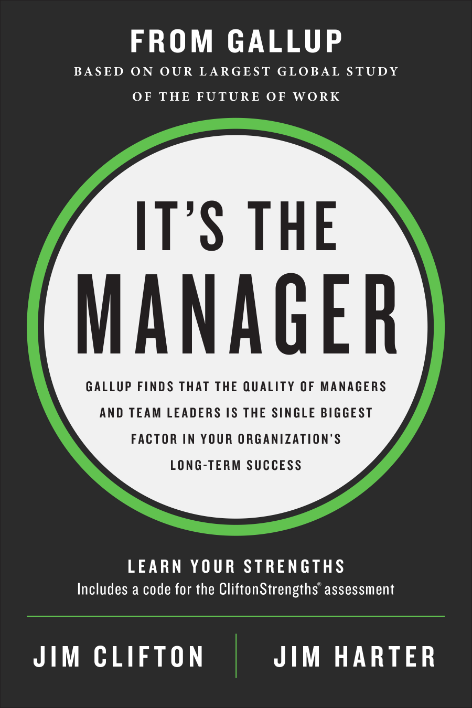Story Highlights
- How business grows (or doesn't) depends on your culture
- Leaders can use disruption to fuel long-term growth
- Focus on five drivers to define organizational culture
A company's organizational culture is like the ground everyone and everything in the company stands on -- it is that from which sustainable business grows.
The trouble is, well-intentioned leaders don't prioritize their culture during disruption; instead, they focus on safeguarding assets and maximizing efficiencies.
Of course, leaders must protect some basics in order to remain solvent. But the best leaders don't remain in defensive mode -- they play offense by recognizing the importance of building a strong company culture and dedicating resources to initiatives that support it.
That is, they treat disruption like fuel for long-term growth.
Gallup has identified five cultural drivers that can help leaders understand the nuances of their unique culture. In doing so, leaders have an opportunity to implement tailored strategies that improve how employees conduct themselves, make decisions, and accomplish their work.
1. Leadership and Communication
Communication about an organization's purpose and brand fortifies employees, instills resilience and positions employees to emerge stronger than ever. Unfortunately, only 13% of employees strongly agree the leadership of their organization communicates effectively with the rest of the organization. That is, most leaders are dead-wrong when they assume their communication efforts are sufficient.
If employees have questions, and there is a lack of leadership communication, they will talk among themselves rather than stay focused on their mission and work. Consistent, ongoing communication from leaders prevents rumor mills and positions employees to understand what is expected as they push the company forward.
A strategy for leaders: Use strengths to develop your personal brand of communication.
Culture is lived through stories. Leaders who get communication right inspire action. The best do this by developing their own brand of storytelling through gaining a deep understanding of their own strengths so that they can leverage the best of who they are as they inspire teams.
Leaders can also tell stories about what is working well -- like about an employee who lived out a cultural value with a customer perfectly -- or how the company's purpose made a difference in someone's life in the past week. This communication fills a void that people desperately need filled. They need to see how what they do makes a difference and know what they're aiming toward.
2. Values and Rituals
Too often, a company's values are unclear: Just 23% of U.S. employees strongly agree that they can apply their organization's values to their work every day.
This is problematic because a value-driven culture is better prepared to navigate crises. Alignment on core values can sharpen decision-making and drive mission-oriented behavior. Strong values enable leaders to stay aligned in communication and messaging to teams. That is, clear values are like landmarks that guide employees and illuminate the path ahead.
A strategy for leaders: Know your values.
First, make sure that you are clear about what your organizational values are. Is there alignment among leadership? Are there any gaps or adjustments needed? Leaders are responsible for clearly and effectively cascading shared values through their own communication and via managers who are closest to the action leading their teams. Strong values and their sister rituals set and reinforce the tone for how employees interact with others when representing the organization.
Consider how behaviors will follow the values you establish. In a retail coffee shop, tasks can get in the way of serving customers. But when service stands and is communicated as a guiding value, they do not. This is because employees are not left confused about whether to pick up the mop or serve the customer at the drive-thru when they know the company values customer service first.
Gallup finds that world-class organizations align their core values not only to employees but to the customers they serve. It is worthwhile for leaders to step back to reassess values and if needed, redefine, and activate core values. Leaders must agree on and then make values known.
3.Work Teams and Structures
Work teams and structures matter a great deal to the effectiveness of culture. Structure dictates who communicates with whom, how frequently and on what topics. Such structures are the air everyone breathes daily to bring the company purpose to life. In the best company cultures, these work teams and structures function as seamlessly as oxygen does -- they feel invisible to employees and customers alike -- but they remain essential for companies to flourish.
On the other hand, as customers, we know what it feels like when work teams and structures do not function as oxygen. We know what it feels like when we go to the register to check out but for some reason, our product is missing a price sticker. Either the clerk is empowered to help us by making a call in the moment (we can exhale) or we suffer as she works through a cumbersome process to determine what to do. That latter experience leaves us choking for air as we try to get on our way. Processes and structures affect how customers and employees perceive and experience the organization.
A strategy for leaders: Make work structures automatic.
Company structures should happen automatically -- and be instinctive. These structures should be "no-brainers" for employees to navigate, they should happen with ease and without interruption. Most leaders have an opportunity to take a fresh look at their approach. By auditing the "how" things happen at the company, an opportunity emerges to consider where the employee and/or customer experience may be simplified or enhanced to better serve teams and customers.
Work structures matter to engagement. Gallup has found that employee perspectives about work structure can dramatically influence employee engagement -- for good or ill. With this in mind, leaders should consistently track employees' perceptions to identify gaps, address barriers and replicate successes.
From an employee's perspective, we learn from the "materials and equipment" item on the Q12 that employees tend to include both tangible and intangible resources -- office supplies, software, knowledge sharing and permissions, to name a few -- that they need to do their job in rating this item. Any of these things can become as easy as air -- or they can become unnecessary hindrances in the everyday life of an employee at work.
4. Human Capital
Changing organizational culture requires leaders to engage their teams in productive ways that help them flourish individually. These days, leaders must see developing their people as perhaps their greatest opportunity -- as traditional HR systems are outdated. Leaders have an opportunity to shift to cultures based on performance development -- where individuals are able to grow as they achieve outcomes for the company.
A strategy for leaders: Equip managers to focus on individual growth.
Managers have real power to make or break culture based on how they are engaging their teams through development-focused work -- or not. Development efforts must be rooted in an ongoing conversation loop in which feedback plays an essential role. As managers are on the front line with associates every day, they are critical to getting this right. Managers must be equipped to know how to have coaching conversations that drive performance based on how each person is enabled to use their own unique abilities. Leaders have an opportunity to invest in manager development and empower managers with the tools and resources they need to individualize development.
Make talent identification a priority. On the other hand, managers are left holding the bag when a poor hire is made, as it can become tricky to set that person up for success if what they are naturally gifted at does not match the needs of the job at hand. Rather, it is possible to set everyone up for success by taking stock of how hiring happens. This means finding a structured way to make hires and track the performance of those hires. One way to do this is to use a validated assessment for key organizational hires.
5. Performance
When leaders get performance management right -- the "how things get done" becomes a powerful motivator for everyone. But, when they miss the mark -- like when rather than celebrate successful outcomes, they instead manage by control -- everyone loses trust.
This is rampant in a culture that does not value trust and people know it -- where keystrokes or computer times are tracked to be sure workers are working and employees stress more about their boss tracking keystrokes on their keyboard than producing great work. Cultures where trust is lacking are vulnerable at best. Even if leadership says that trust is a value, micromanaging says otherwise, causing a misalignment that ends up wasting everybody's time and energy.
A strategy for leaders: Build relationships (instead of buying a keystroke-tracking app).
Leaders are understandably concerned about performance. But there is a better way than watching what employees are doing and constantly checking in. If managers have built relationships with those on their teams, check-ins can be positioned not as interrogations or surveillance, but as coaching sessions -- in which clear expectations are established and employees have the opportunity to share their progress and challenges. Managers can then offer feedback and actively coach each person on their performance.
Invest to hire and develop high-performing managers. Investment in managers is critical. They account for 70% of the variance in team engagement but an alarming 65% of managers are not engaged or are actively disengaged. In most organizations, there is a big opportunity to invest in the experience of the managers to better set them up for success. This can mean things like defining key experiences for managers, including educating them about how to be effective coaches.
Even though the "how things get done" of work culture can seem invisible, its effects are felt by employees and customers alike.
Leaders who take time to care for and cultivate their culture by acting on tangible drivers sow seeds that will yield enormous benefits, especially when disruption is used as fuel to drive toward the brightest possible future.
Ready to dig deeper?
- Download our free guide on how to get the most out of your culture.
- Manage your organization's culture like the asset it is.
- Learn more about how Gallup does culture transformation.




